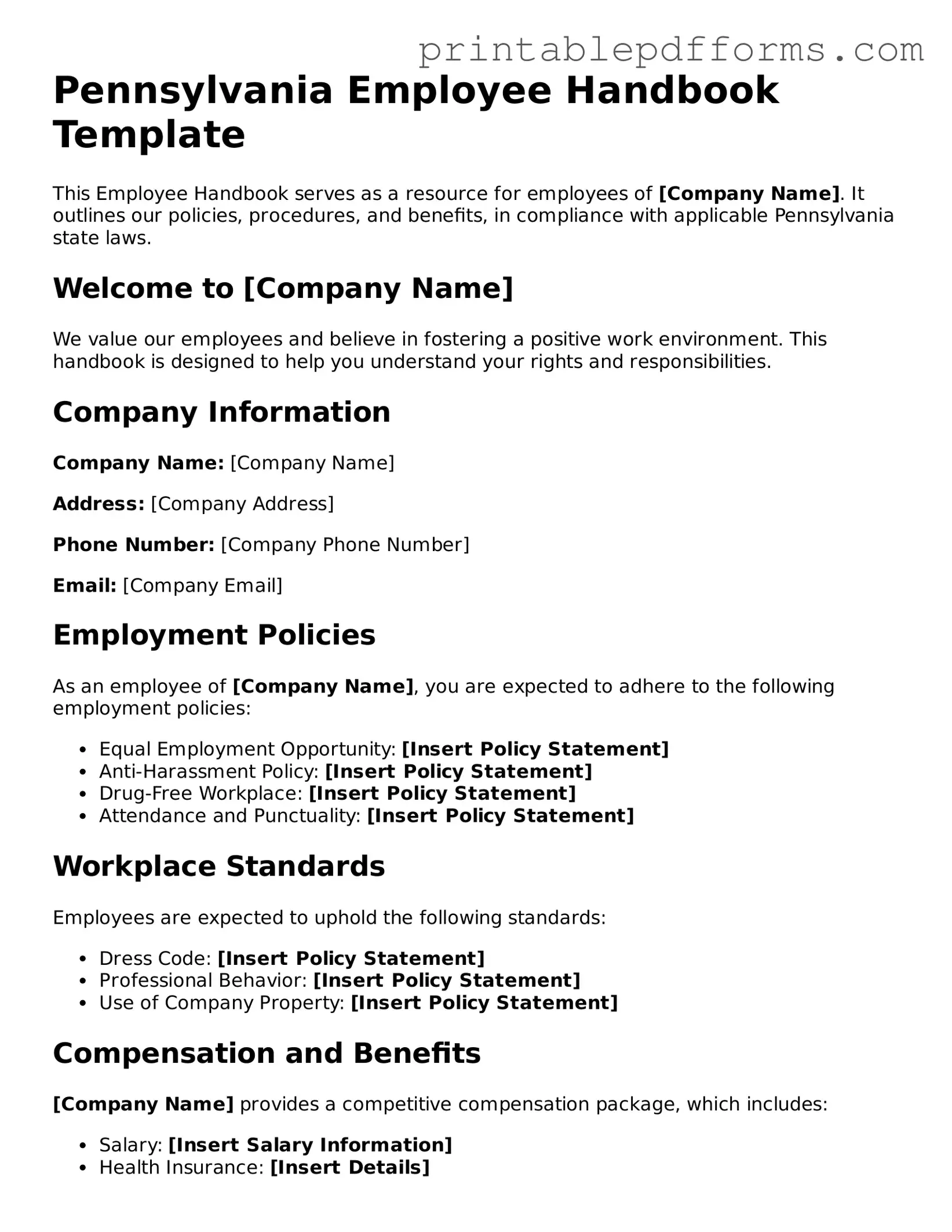Pennsylvania Employee Handbook Template
This Employee Handbook serves as a resource for employees of [Company Name]. It outlines our policies, procedures, and benefits, in compliance with applicable Pennsylvania state laws.
Welcome to [Company Name]
We value our employees and believe in fostering a positive work environment. This handbook is designed to help you understand your rights and responsibilities.
Company Information
Company Name: [Company Name]
Address: [Company Address]
Phone Number: [Company Phone Number]
Email: [Company Email]
Employment Policies
As an employee of [Company Name], you are expected to adhere to the following employment policies:
- Equal Employment Opportunity: [Insert Policy Statement]
- Anti-Harassment Policy: [Insert Policy Statement]
- Drug-Free Workplace: [Insert Policy Statement]
- Attendance and Punctuality: [Insert Policy Statement]
Workplace Standards
Employees are expected to uphold the following standards:
- Dress Code: [Insert Policy Statement]
- Professional Behavior: [Insert Policy Statement]
- Use of Company Property: [Insert Policy Statement]
Compensation and Benefits
[Company Name] provides a competitive compensation package, which includes:
- Salary: [Insert Salary Information]
- Health Insurance: [Insert Details]
- Retirement Plan: [Insert Details]
- Paid Time Off: [Insert Details]
Employee Rights and Responsibilities
Employees have the right to:
- A safe and healthy workplace.
- Fair treatment and respect.
- Access to their personnel files.
Employees are responsible for:
- Adhering to company policies.
- Reporting misconduct or unsafe conditions.
- Maintaining confidentiality.
Termination Policy
Termination of employment may occur under the following circumstances:
- Resignation.
- Involuntary Termination: [Insert Policy Statement]
Acknowledgment of Receipt
By signing below, you acknowledge that you have received and read the Employee Handbook.
Employee Name: ________________________
Date: ________________________
Manager's Name: ________________________
Date: ________________________
